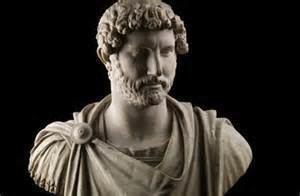Died 120 AD Name Onkelos Onkelos | ||
 | ||
Who was onkelos letters flying free part iv with rabbi moshe teitelbaum
Onkelos (Hebrew: אונקלוס), possibly identical to Aquila of Sinope, was a Roman national who converted to Judaism in Tannaic times (c. 35–120 CE). He is considered to be the author of the famous Targum Onkelos (c. 110 CE).
Contents
- Who was onkelos letters flying free part iv with rabbi moshe teitelbaum
- Parashat tetzaveh 1 of 2 audio bible reading with rashi onkelos etc
- Onkelos in the Talmud
- The Targum of Onkelos
- References

Parashat tetzaveh 1 of 2 audio bible reading with rashi onkelos etc
Onkelos in the Talmud
Onkelos is mentioned several times in the Talmud. According to the traditional Jewish sources, he was a prominent Roman nobleman, a nephew of the Roman emperor Titus. According to the midrash Tanhuma he was a nephew of Hadrian, and not Titus. The story goes that his uncle, the Roman Emperor, advised Onkelos to go out and find something that wasn't worth much today but would be invaluable in the future. Onkelos found Judaism. His conversion is the subject of a story wherein he first consulted with the spirits of three deceased enemies of Israel to see how Israel fared in the next world (Gittin 56b). The first was his uncle Titus, who was blamed for the destruction of the Second Temple; the second was the seer Balaam, hired by Balak king of Moab to curse Israel; and the last was Yeshu, a name used for those who sought to lead Jews astray to idolatry, in particular an idolatrous former student of Joshua ben Perachiah in the Hasmonean period as well as Manasseh of Judah. (In later writings Yeshu is used for Jesus, but opinions differ over whether it can be understood this way in the Talmud.) Onkelos is said to have seen all of them subjected to humiliating punishments for harming Israel. The earlier Jerusalem Talmud gives the subject of these stories as Aquilas the proselyte, often understood as being a person other than Onkelos. The difficulty with this theory, however, is that the Jerusalem Talmud says explicitly that he (Aquilas the proselyte) translated the Torah under Eliezer ben Hurcanus and Joshua ben Hananiah. The Babylonian Talmud repeats the same oral tradition, but this time calls him by the name Onkelos the proselyte, which leads one to conclude that the name is a mere variant of "Aquila", applied in error to the Aramaic instead of the Greek translation. This view is supported by Epiphanius of Salamis (4th century).
After his conversion, the Talmud records a story of how the Roman emperor tried to have Onkelos arrested (Avodah Zarah 11a). Onkelos cited verses from the Tanakh to the first Roman legion, who then converted. The second legion was also converted, after he juxtaposed God's personal guidance of Israel in the Book of Numbers to the Roman social hierarchy. A similar tactic was used for the third legion, where Onkelos compared his mezuzah to a symbol of God guarding the home of every Jew, in contrast to a Roman king who has his servants guard him. The third legion also converted and no more were sent.
The Targum of Onkelos
According to tradition, Onkelos authored the Targum Onkelos as an exposition of the "official" interpretation of the pshat (or basic meaning) of the Torah as received by Eliezer ben Hurcanus and Joshua ben Hananiah. This helped canonise the status of both Onkelos and his Targum in the Jewish tradition.
